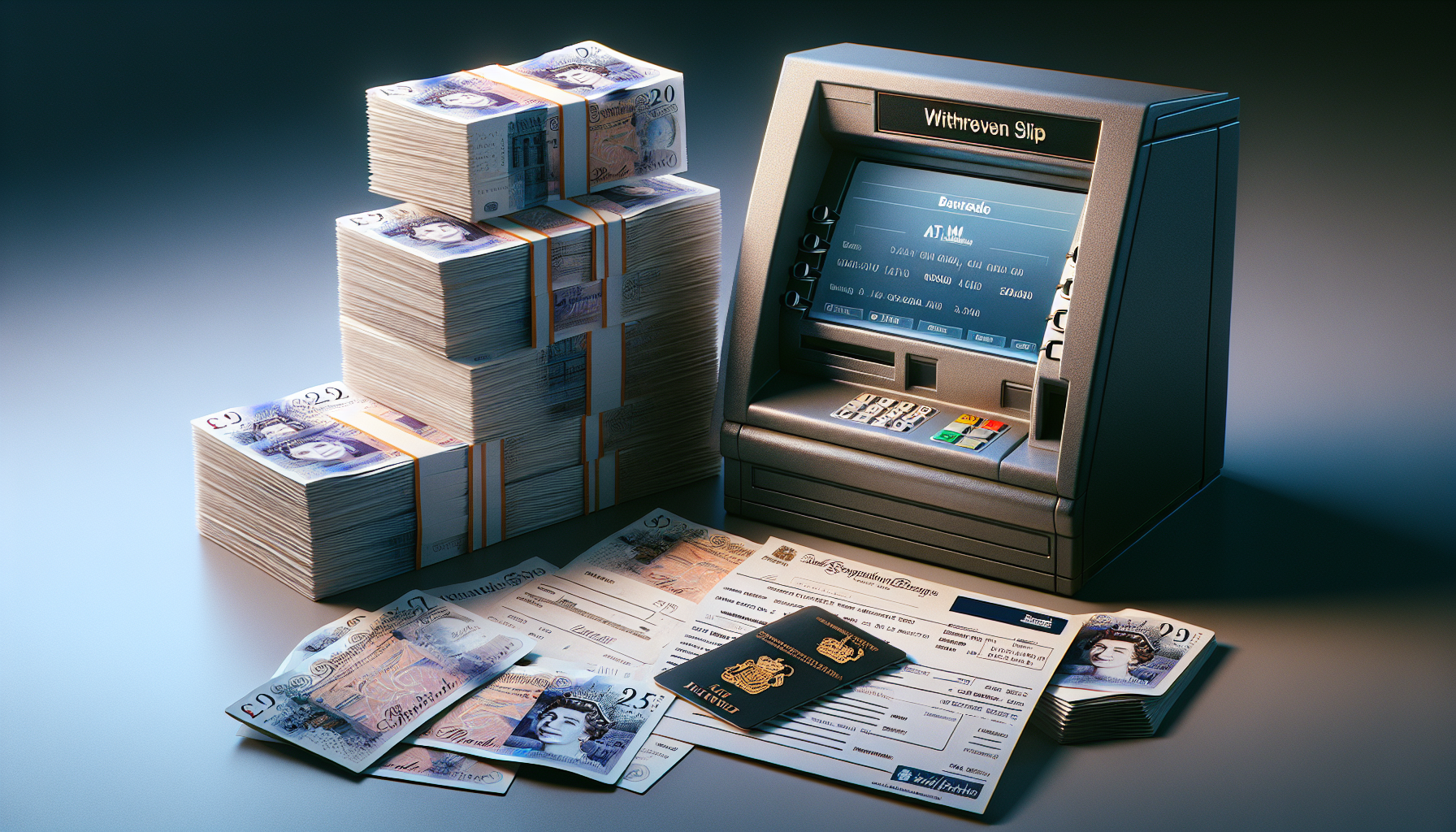When it comes to managing your finances, it’s essential to understand the policies and procedures surrounding cash withdrawals from banks in the UK. While modern banking systems have made it easier to access your money through various means, such as ATMs and online banking, there are still limits and requirements in place for withdrawing large sums of cash. In this article, we’ll explore the cash withdrawal limits, requirements for large withdrawals, and bank-specific policies to help you navigate the process with ease.
Understanding Cash Withdrawal Limits in the UK
In the United Kingdom, banks have set daily cash withdrawal limits to ensure the security of their customers’ funds and to comply with money laundering regulations. These limits apply to both ATM withdrawals and in-person withdrawals at bank branches. It’s crucial to be aware of these limits to avoid any inconvenience when you need to access your money.
Cash withdrawal limits can vary depending on the bank and the type of account you hold. Some banks may allow you to withdraw higher amounts if you provide advance notice, while others may have strict limits in place regardless of the circumstances. Understanding your bank’s specific policies can help you plan your withdrawals accordingly.
Standard Daily Cash Withdrawal Limits
Most banks in the UK have a standard daily cash withdrawal limit of around £500 for ATM transactions. This means that you can withdraw up to £500 from an ATM within a 24-hour period. If you need to withdraw more than this amount, you may need to visit a bank branch in person.
For in-person withdrawals at a bank branch, the daily limit is typically higher, usually around £2,500. However, if you need to withdraw more than this amount, you may be required to provide advance notice to the bank. This allows the bank to ensure that they have sufficient cash available and to verify the legitimacy of the withdrawal.
Large Cash Withdrawal Policies
If you need to withdraw a large sum of cash, typically over £2,500, you’ll need to follow your bank’s specific policies for large cash withdrawals. These policies are in place to prevent fraud, money laundering, and other illegal activities.
- For withdrawals between £5,000 and £19,999, you may need to provide at least 24 hours’ notice to your bank.
- For withdrawals of £20,000 or more, you may need to give your bank at least 3 business days’ notice.
It’s important to contact your bank in advance to discuss your large cash withdrawal requirements. They will guide you through the process and advise you on any additional documentation or identification you may need to provide.
Requirements for Large Cash Withdrawals
When making a large cash withdrawal, banks have certain requirements in place to verify your identity and the legitimacy of the transaction. These requirements help to prevent fraud, money laundering, and other financial crimes. By understanding and complying with these requirements, you can ensure a smooth and secure withdrawal process.
Proof of Identity and Documentation
To withdraw a large sum of cash, you’ll need to provide valid proof of identity. This can include:
- Passport
- Driver’s license
- Northern Ireland Voters Card
In addition to proof of identity, your bank may require you to provide additional documentation for a large cash withdrawal. Usually they will provide you with a list of acceptable documents, and you will need to provide at least two of them.
| Type of Documentation | Examples |
|---|---|
| Proof of Address | Utility bill, bank statement, council tax bill |
| Proof of Income | Payslip, tax return, pension statement |
| Reason for Withdrawal | Invoice, contract, letter from solicitor |
Reasons for Withdrawal Requirements
Banks have these requirements in place for several reasons, primarily to prevent financial crime and to ensure the security of their customers’ funds. By verifying your identity and the purpose of your withdrawal, banks can:
- Comply with money laundering regulations
- Prevent fraud and scams
- Protect their customers’ assets
While these requirements may seem strict, they are essential for maintaining the integrity of the banking system and safeguarding your money. By cooperating with your bank and providing the necessary documentation, you can help to ensure a smooth and secure withdrawal process.
Bank-Specific Cash Withdrawal Policies
While there are general cash withdrawal limits and requirements that apply to most banks in the UK, it’s important to be aware that each bank may have its own specific policies. These policies can vary in terms of daily withdrawal limits, branch-specific limits, and the need for advance notice for large withdrawals.
Barclays Cash Withdrawal Policy
Barclays has a daily cash withdrawal limit of £2,000 from its branches, unless you give advance notice. However, this limit can vary depending on the specific branch, as some may have lower limits in place. If you need to withdraw more than £2,000, you’ll need to contact your local branch in advance to arrange the withdrawal and ensure that they have sufficient cash available.
HSBC and Lloyds Cash Withdrawal Policies
Both HSBC and Lloyds do not have a set daily cash withdrawal limit for their branches. However, if you need to withdraw a large sum of cash, it’s always best to contact your local branch in advance to discuss your requirements. This allows the branch to prepare the funds and ensure a smooth withdrawal process.
NatWest and RBS Cash Withdrawal Policies
NatWest and RBS also do not have a set daily cash withdrawal limit for their branches. Like HSBC and Lloyds, if you need to withdraw a large sum of cash, it’s advisable to contact your local branch in advance to discuss your needs and ensure that they have sufficient cash available.
Nationwide and Santander Cash Withdrawal Policies
Nationwide has a daily cash withdrawal limit of £2,000 from its branches, while Santander has a limit of £5,000. However, these limits can vary depending on the specific branch, so it’s always best to check with your local branch for their specific policies. If you need to withdraw more than the daily limit, you’ll need to provide advance notice to the branch.
Alternatives to Large Cash Withdrawals
While there may be situations where you need to withdraw a large sum of cash, it’s worth considering alternative methods of managing your money. Large cash withdrawals can be risky, as they make you a target for theft and can be difficult to trace if lost or stolen. Additionally, carrying large amounts of cash can be inconvenient and impractical.
Online and Mobile Banking Services
Online and mobile banking services offer a convenient and secure way to manage your money without the need for large cash withdrawals. With these services, you can:
- Check your account balance
- Transfer money between accounts
- Pay bills and set up standing orders
- Receive SMS alerts for transactions
By using online and mobile banking, you can reduce your reliance on cash and minimize the risk associated with large cash withdrawals.
International Money Transfer Services
If you need to transfer money internationally, using a specialized money transfer service can be a more secure and cost-effective option compared to withdrawing a large sum of cash. Companies like Small World offer a range of services for global money transfers, including:
- Bank deposit
- Mobile top-up
- Cash pickup
- Mobile wallet
- Home delivery
- Cash card reload
By using a reputable money transfer service, you can ensure that your funds are transferred securely and efficiently, without the need to carry large amounts of cash.
See also:

